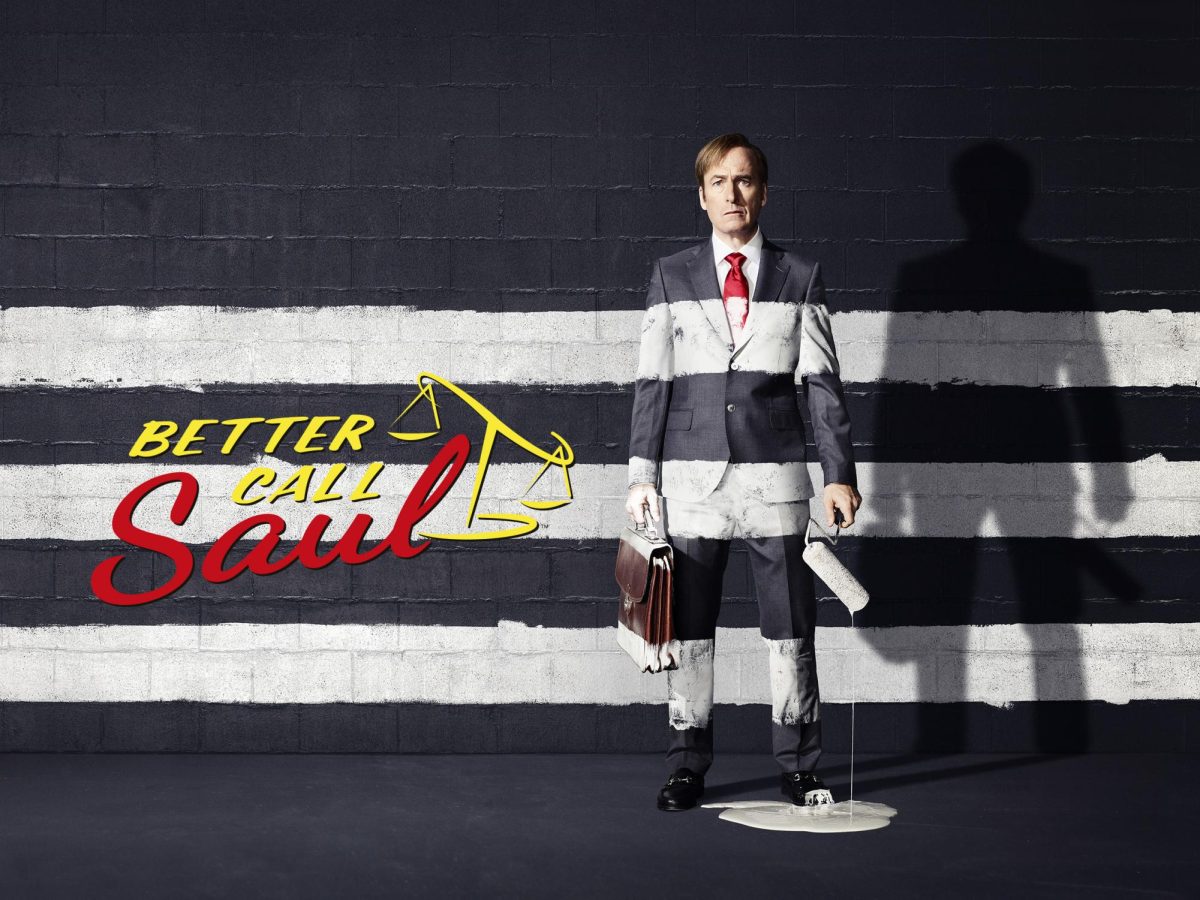Two figures stand in a parking garage, leaning against a wall. Cigarette smoke curls out of their mouths, silhouetted by a cold light that catches the curls floating through the air. One figure exclaims, “Couldn’t you just—” but is cut off by the other, “You know I can’t.” Kim then throws down her cigarette and puts it out, entering the downstairs landing where she picks up a trash can that was kicked down by Jimmy. Jimmy remains, staring into the abyss before him.
Starting six years before the rise of Walter White and his meth empire in Breaking Bad, Better Call Saul avoids that aspect of Albequerque, at least in the first couple of seasons. Instead, Better Call Saul, a six-season prequel, focuses on one thread of the Breaking Bad story: specifically the backstory behind the charismatic and criminal defense lawyer Jimmy McGill, better known to most as Saul Goodman. While both shows tell a story of a man down on his luck who resorts to criminality and violence as a perceived escape hatch, Better Call Saul relies on specific and deliberate nuances that create a deeper and more persuasive narrative.
Much of that nuance is driven by the creators of both shows, Vince Gilligan and Peter Gould. When they were writing Breaking Bad, they had no way of anticipating how wildly popular the show would become. Beginning with a relatively simple premise, Breaking Bad quickly outpaced the scaffolding Gilligan and Gould put up. This led them to place Jesse and Walter in increasingly impossible positions and then find ways for them to escape. This writing philosophy makes Breaking Bad flashy and emphasizes action, seeing violence as the first and last choice. This style differs from the way they wrote Better Call Saul. Better Call Saul revels in Jimmy and other characters’ choices, creating tension not through the threat of death or brutality but the question in the background. This simmering resentment eventually drives people apart, a silence that speaks more than words alone could. Much of the value of Better Call Saul is driven by small symbols, recurring themes, and details that alone mean nothing but, in the greater context of the dramatic tension, are heart-stopping.
Key to the success of Better Call Saul is the performance of the main actors. While Jimmy, played by Bob Odenkirk, is easily the most famous and well-known character and actor, others, such as Kim Wexler, played by Rhea Seehorn, display surprising depth, range, and mastery. Michael McKean, Jimmy’s brother, provides a particularly scathing performance, blending his own persona with the cynical, condescending, misguided, but ultimately correct Charles McGill. Another familiar face to those who watched Breaking Bad is Mike Ehrmantraut, played by Jonathan Banks. Rhea Seehorn as Kim Wexler transforms an otherwise male-dominated narrative. The subtleties in her acting, the sly glances and knowing grins, establish a compelling and complex character reminiscent of Lady Macbeth. The outstanding acting, combined with thoughtful and creative writing, creates a series that is just as intense and gritty as Game Of Thrones but with the emotional beats of a movie like La La Land.
At the end of the day, the story of Better Call Saul is about a trainwreck. A fall from grace. But even in the deepest of lows and the highest of highs, the series manages to show the sadness in the joy, the glimmer of hope in the darkest of nights. The expectation of a dichotomy between good and evil and the subsequent subversion of that remains as haunting as it is entertaining. Jimmy’s fall from grace and subsequent martyrdom is characterized by one key question: How much are you willing to lose to do the right—or wrong—thing?









